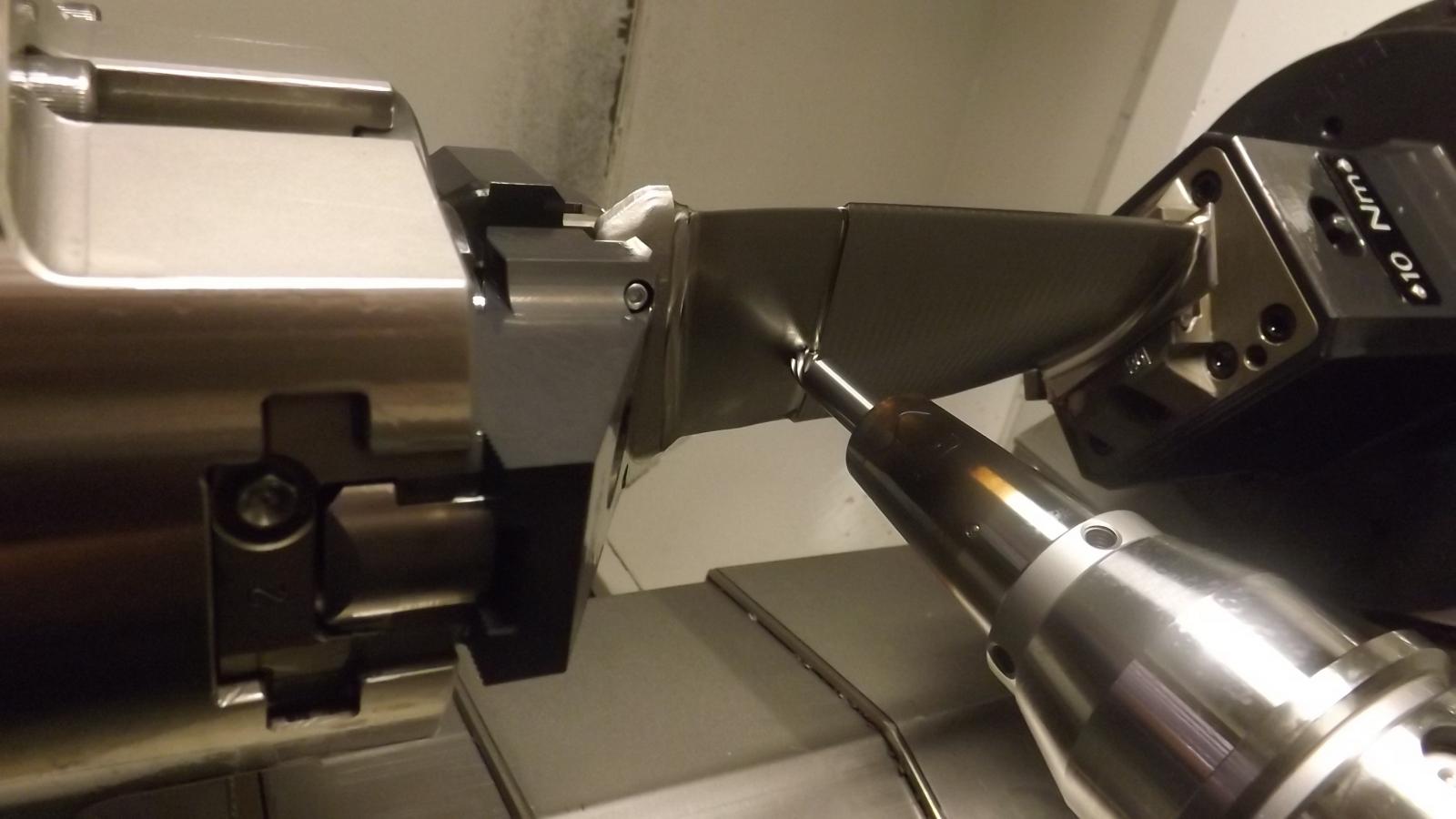
JJ Churchill is working closely with machine supplier Starrag to apply in-process probing and adaptive milling to turbine blade machining.
This is further builds on JJ Churchill’s success in machining blades from solid in a single setup rather than producing them from larger batches of forgings.
The aim is to develop specific production processes that consistently produce world-beating time and manufacturing benefits.
Both techniques are forecast to result in unprecedented savings in overall production times as well as improved surface finishes to eclipse the 0.7/0.8 Ra currently being achieved by JJ Churchill when using a ‘super finish mode’ on the Starrag machines.
The developments are among a number of initiatives being led by JJ Churchill’s Head of Engineering, Will McAleese and his team.
According to Mr McAleese: “It is some time now since we’ve proved that machining blades from bar has a number of advantages over the traditional route of machining forgings, not least the fact that the process negates the need for relatively large batch sizes – one-offs to 90-off are feasible compared to a minimum batch of, say, 300-off when oversize (usually by 3 mm) forgings are used. And the resultant time savings can be enormous when it is accepted that lead times for forgings can sometimes be one year.
“In addition, blade integrity from billet compares with that from a forging, and milling from solid means that blade aerofoils can be held to the same tolerances – at least 25 microns radially and axially as well as on alignment.”
The springboard into such a highly flexible method of blade production was mapped out by the Market Bosworth (Midlands) company in 2008, when it started its association with Starrag UK for machine supply and with Starrag Switzerland on the joint development of the process and programming/cutting parameters for the machining of double-ended stators.
Its so-called ‘fast-make’ strategy has since been applied to a number of contracts among its blue-chip customer base that includes first-tier status with companies such as Rolls-Royce, Siemens and Safran.
Now, however, blade machining continues to be refined, as Mr McAleese explains: “A blade is conventionally held by clamping on the machine’s tailstock/driven head and, rather than machining commencing on the assumption that the blade is positioned and held accurately every time – which isn’t always the case - we’re now probing the root (using a probe held in the machine’s tool magazine) to accurately locate its position.
“Using Starrag’s RCS CAM software, the machining program then automatically adjusts to the blade’s true position within the machine and determines the ‘best fit’ position of the blade in relation to the root. This means we can eliminate the need to measure the blade (by co-ordinate measuring machine) after machining and, if necessary, adjust and re-write programs then undergo a period of post-programming before we can re-start machining.
“The potential time savings are extraordinary if we can ensure this probing regime is consistently faultless.”
RCS’s capability for adaptive milling is also being put to work by JJ Churchill on creating perfect blends on aerofoils, on both bar and forged blades – a technique where Haimer heat shrink tooling and 2 mm diameter ball nose cutters also play key roles. “Better surface finish is the result of improving and decreasing the cutter step-over,” says Mr McAleese, “as well as creating far less stress on the material and improved process capability as well as extended tool life.”